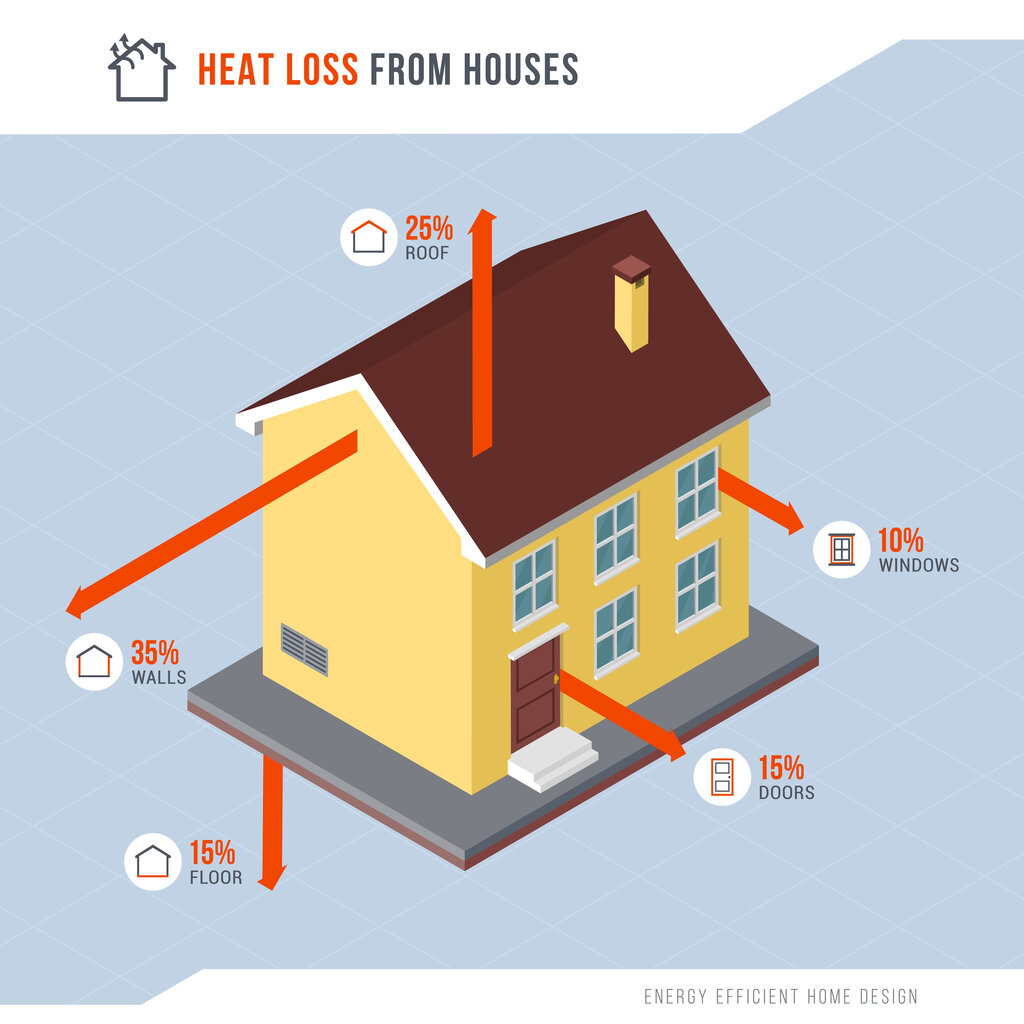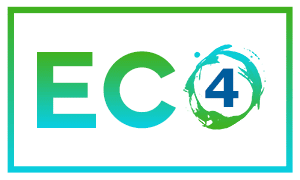
The concept of investing in home improvements often centres around aesthetics or increasing space. However, energy efficiency upgrades, like External Wall Insulation (EWI), are increasingly popular due to their potential for tangible financial returns. Here's an in-depth look into the ROI homeowners can expect from EWI.
Immediate energy savings
Buildings lose approximately 35% of their heat through external walls, especially if they're not insulated. This means that, in the absence of proper insulation, a substantial portion of the heat produced by your heating system merely escapes, causing it to run more frequently and consume more energy.
EWI works by adding a protective layer to your home's external walls. This layer serves as a thermal blanket, reducing the rate of heat transfer. In winter, it retains the warmth inside, minimising the need for constant heating. Conversely, during summer, EWI reflects the sun's rays and prevents excessive heat from penetrating the walls, ensuring interiors remain cooler and reducing the need for air conditioning.
The exact savings from installing EWI can vary based on factors like the home's size, location, existing insulation, and the efficiency of the heating/cooling system. However, homeowners can typically expect to save between 20% to 50% on their energy bills. For instance, savings can be up to £1,000 a year depending on the level of insulation installed. In some cases, like Howgate Close, energy bills are almost zero due to the super-insulation envelope. Twinned with renewable energy measures, the tenants can sell energy back to the grid.
With EWI in place, heating systems operate more efficiently. Because the system doesn't have to work as hard to maintain the desired temperature, it undergoes less wear and tear. This not only leads to reduced energy consumption but also prolongs the lifespan of the heating system, saving costs on potential repairs or replacements.
Less energy consumption means a reduced carbon footprint, making EWI an environmentally-conscious choice. Moreover, many energy providers offer reduced tariffs or green energy discounts to homes with proven energy efficiency measures. This can lead to further reductions in monthly energy bills.

Enhanced property value
Most countries have an energy rating system for homes, such as the Energy Performance Certificate (EPC) in the UK. A higher rating indicates a more energy-efficient home. With EWI, homes can achieve a better EPC rating, which has become a key factor potential buyers consider. The more energy-efficient a home is, the more appealing it becomes, leading to a direct increase in its market value.
Apart from its insulating properties, EWI offers an opportunity to refresh the exterior appearance of a home. With a wide range of finishes and colours available, homeowners can tailor the look to current design trends or personal preferences. A well-executed EWI project can transform an older property into a visually appealing modern home, making it more attractive to prospective buyers.
EWI acts as a protective shield, safeguarding the external fabric of a building from weather-induced wear and tear. This protective layer can extend the lifespan of brickwork, reduce maintenance needs, and prevent weather-related damage. A home that promises reduced long-term maintenance is a compelling sale on the property market.
With the global push towards sustainability, many buyers prioritise eco-friendly homes. EWI doesn’t just cut down energy bills; it reduces a home's carbon footprint. For eco-conscious buyers, this makes a home with EWI more attractive, potentially fetching a premium price.
With the steady climb in energy prices and the push for greener energy solutions, homes that lock in energy efficiency now stand to gain significantly in the future. EWI is an investment in this future, ensuring homes remain comfortable and affordable as energy scenarios evolve. This foresight can be a strong selling point when positioning a property in the market.

Grants and Incentives
For homeowners considering External Wall Insulation (EWI), understanding the monetary incentives available can play a significant role in the decision-making process. Governments and local authorities often recognise the environmental and societal benefits of EWI, offering a range of grants and incentives to encourage its adoption. Local councils or municipalities often have their own set of incentives for residents to improve their homes' energy efficiency. These might be in the form of direct grants, rebates, or subsidised services, reducing out-of-pocket expenses for homeowners. In some regions, energy suppliers are obligated to help households reduce their energy consumption and greenhouse gas emissions. Under schemes like these, eligible homeowners can get support from energy companies to fund energy-saving measures, including the installation of EWI. Certain governments offer reduced VAT rates on energy-saving products and services. For homeowners, this could translate into savings when purchasing materials or hiring professionals for EWI installations. While not a direct grant or incentive, the reduction in energy bills post-EWI installation acts as a continuous saving incentive. Over the years, these savings can accumulate to significant amounts, offsetting the initial investment cost and sometimes even exceeding it. Recognising the value of sustainable homes, some financial institutions have started offering specialised green mortgages or loans. These provide preferential rates or terms for homes with energy-efficient features, like EWI, making the financing aspect more favourable for homeowners.
Grants and incentives - ECO4
The ECO4 scheme, launched by the UK government, emphasises energy efficiency for existing homes. Central to the scheme is its commitment to insulation measures, with offerings like cavity walls, solid walls, room in a roof, and loft insulation. Depending on the household's unique needs, these insulation measures can be availed, potentially leading to substantial annual energy savings of up to £1,800. A defining feature of the ECO4 is its fabric-first approach. Instead of diving straight into supplementary measures like heating upgrades, the scheme prioritises structural energy efficiency enhancements. In doing so, the ECO4 not only aids homeowners in reducing energy bills but also contributes to the broader goal of reducing the nation's carbon emissions. For homeowners, ECO4 represents both an eco-friendly and cost-effective opportunity.

Longevity and reduced maintenance
EWI systems are designed with durability at their core. Top-quality materials and best-practice installation methods ensure that the insulation remains robust and effective for years. Homeowners can thus benefit from consistent energy efficiency over extended periods without worrying about the insulation's degradation. Quality EWI offers the advantage of minimal upkeep. The system's integrity means homeowners won't be frequently bogged down with concerns of sagging or degrading insulation. This longevity translates into fewer maintenance checks, interventions, and associated costs. A well-installed EWI system acts as a formidable barrier against many external threats. It protects against moisture intrusion, preventing dampness and mould growth. By staving off these potential issues, EWI indirectly ensures the internal structure and finishes of the property last longer, reducing repair and replacement costs. While immediate reductions in energy bills are the most evident financial benefit, the long-term savings from reduced maintenance and extended durability of home fixtures add to the EWI's ROI. Over the years, these accumulative savings can be substantial.
Health and well-being costs
EWI ensures a consistent indoor temperature, reducing cold spots and drafts. This stabilised environment is not only comfortable but also beneficial for individuals, particularly those with conditions like arthritis or circulatory problems, where consistent warmth is essential. By providing an effective moisture barrier, EWI minimises the risk of dampness and mould growth inside the property. Exposure to mould spores is known to exacerbate respiratory conditions like asthma and can lead to various allergies. By preventing mould growth, EWI indirectly reduces potential medical costs and enhances the occupants' health. A comfortable home environment plays a pivotal role in mental well-being. Consistent temperatures and a mould-free environment mean fewer worries for homeowners. This peace of mind, combined with the financial savings from reduced energy bills, contributes to reduced stress levels and an overall better quality of life.
